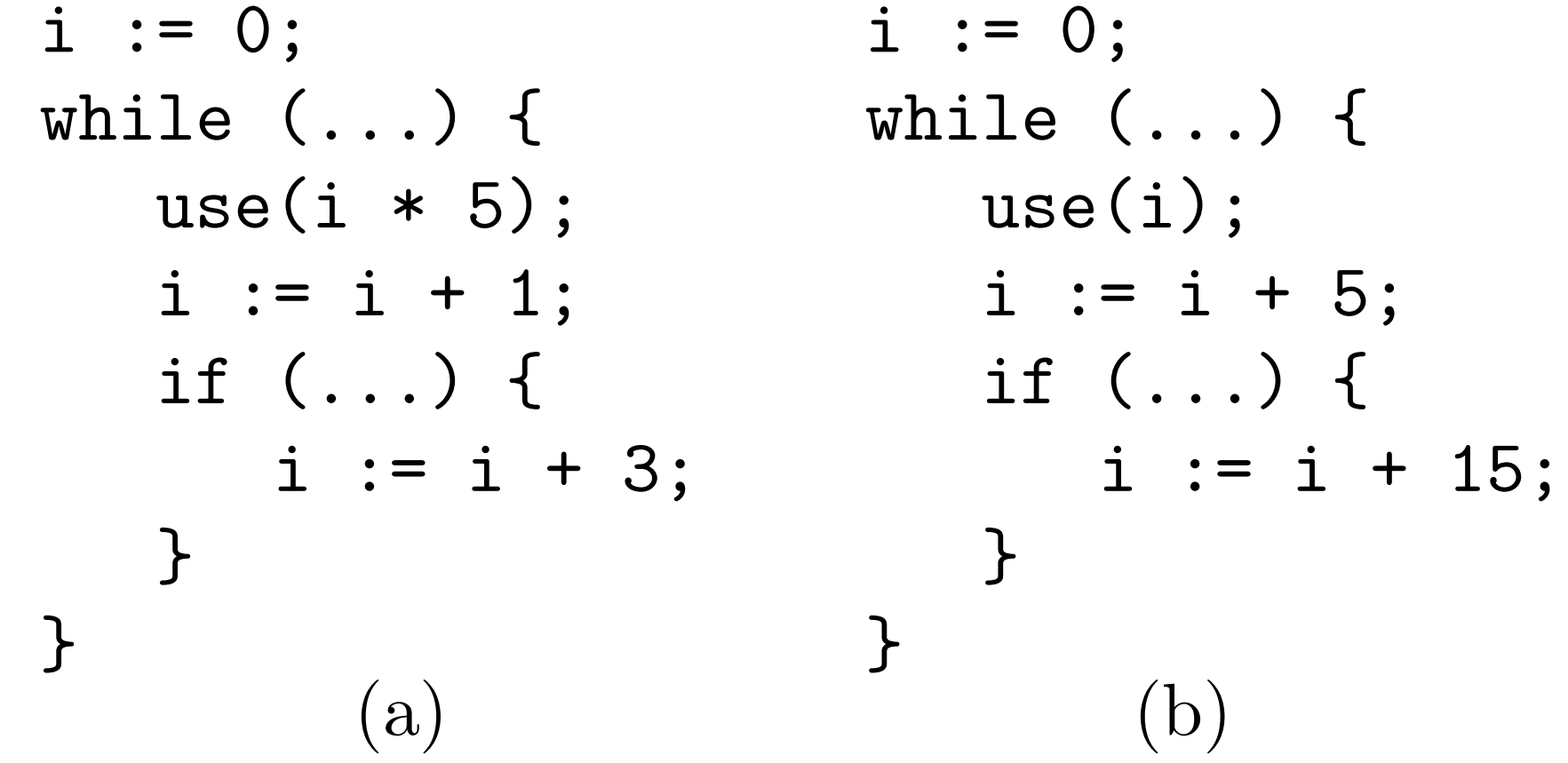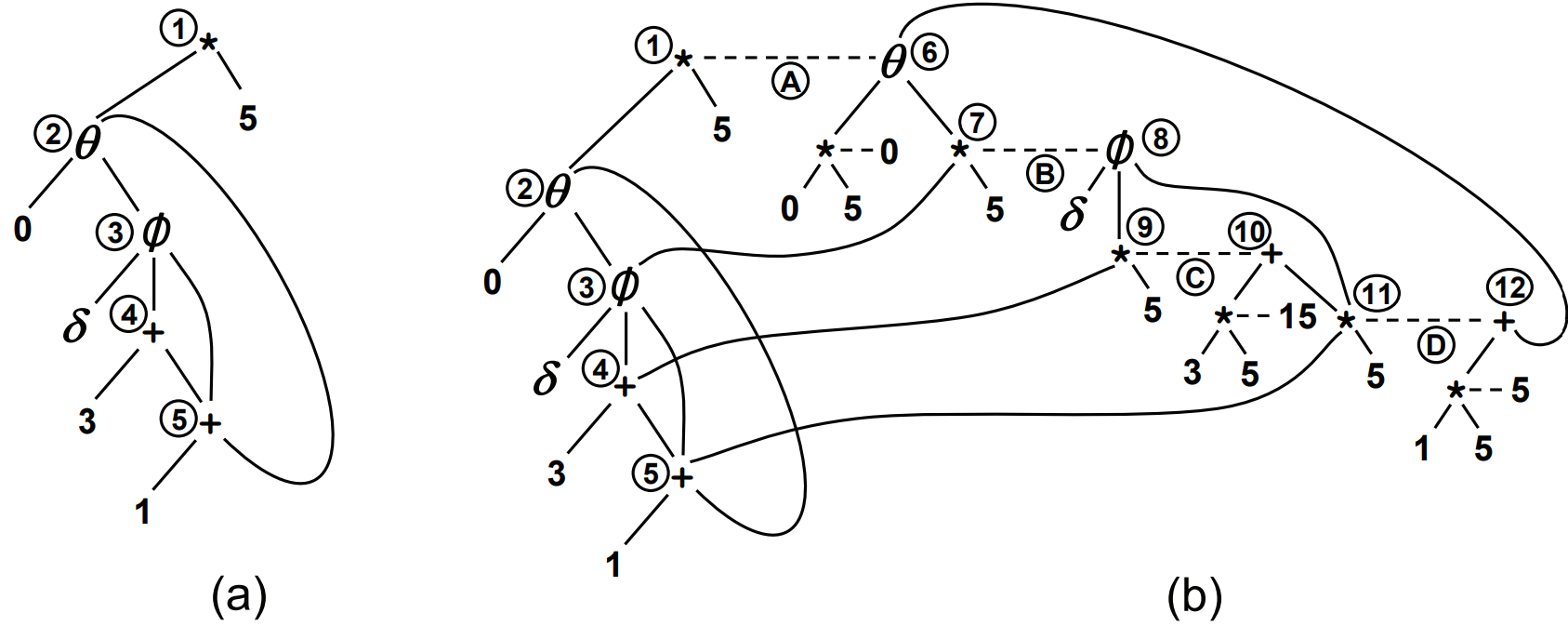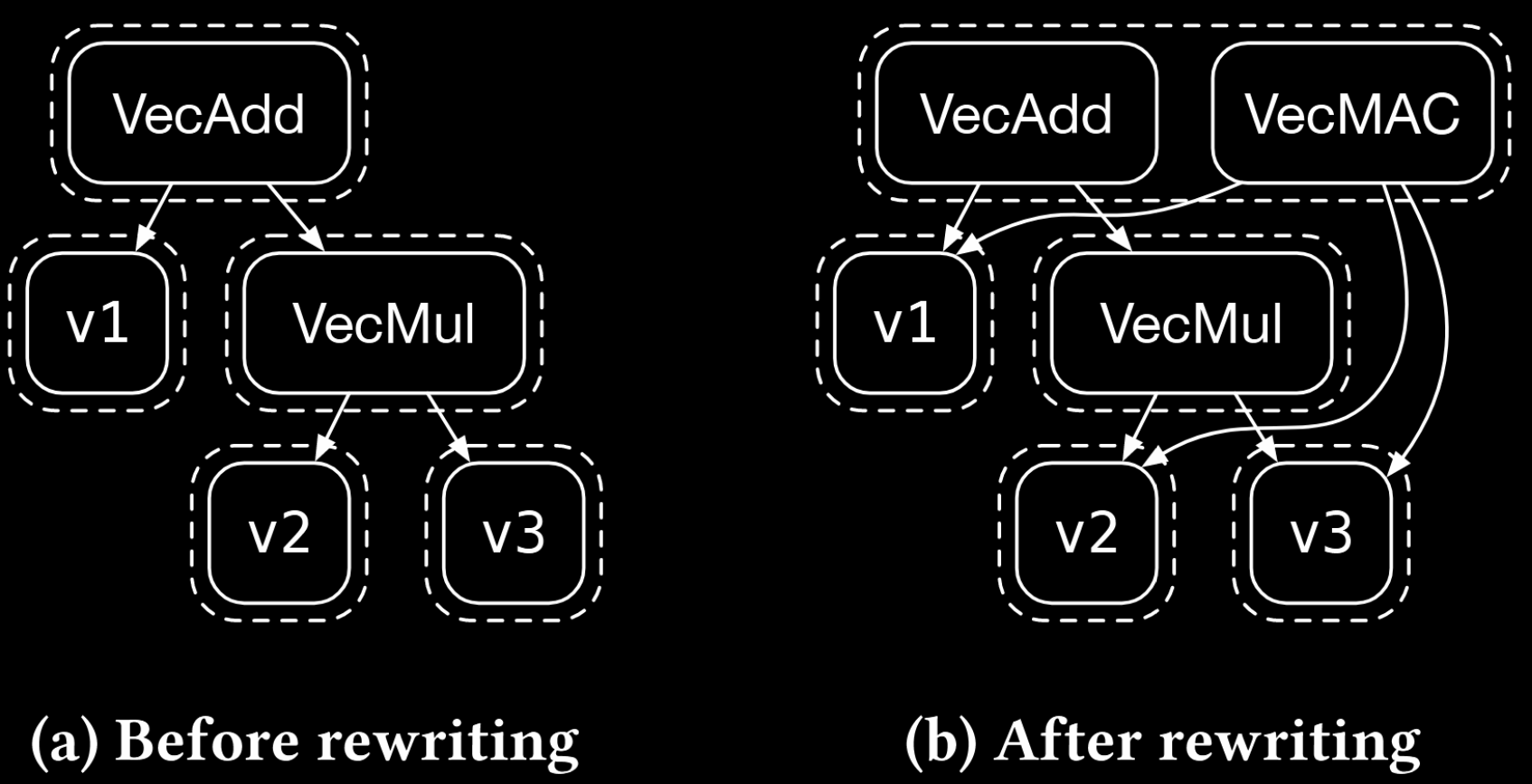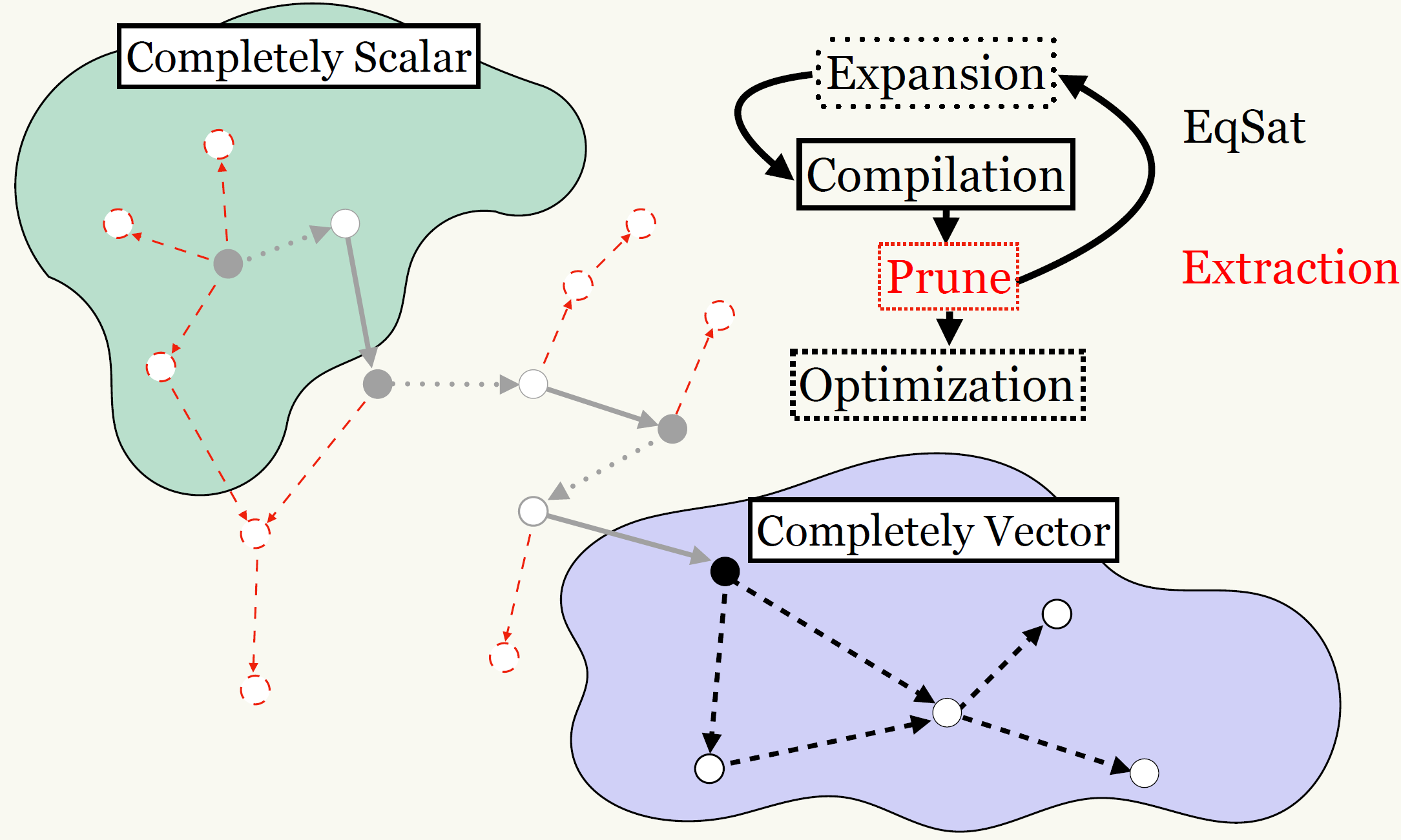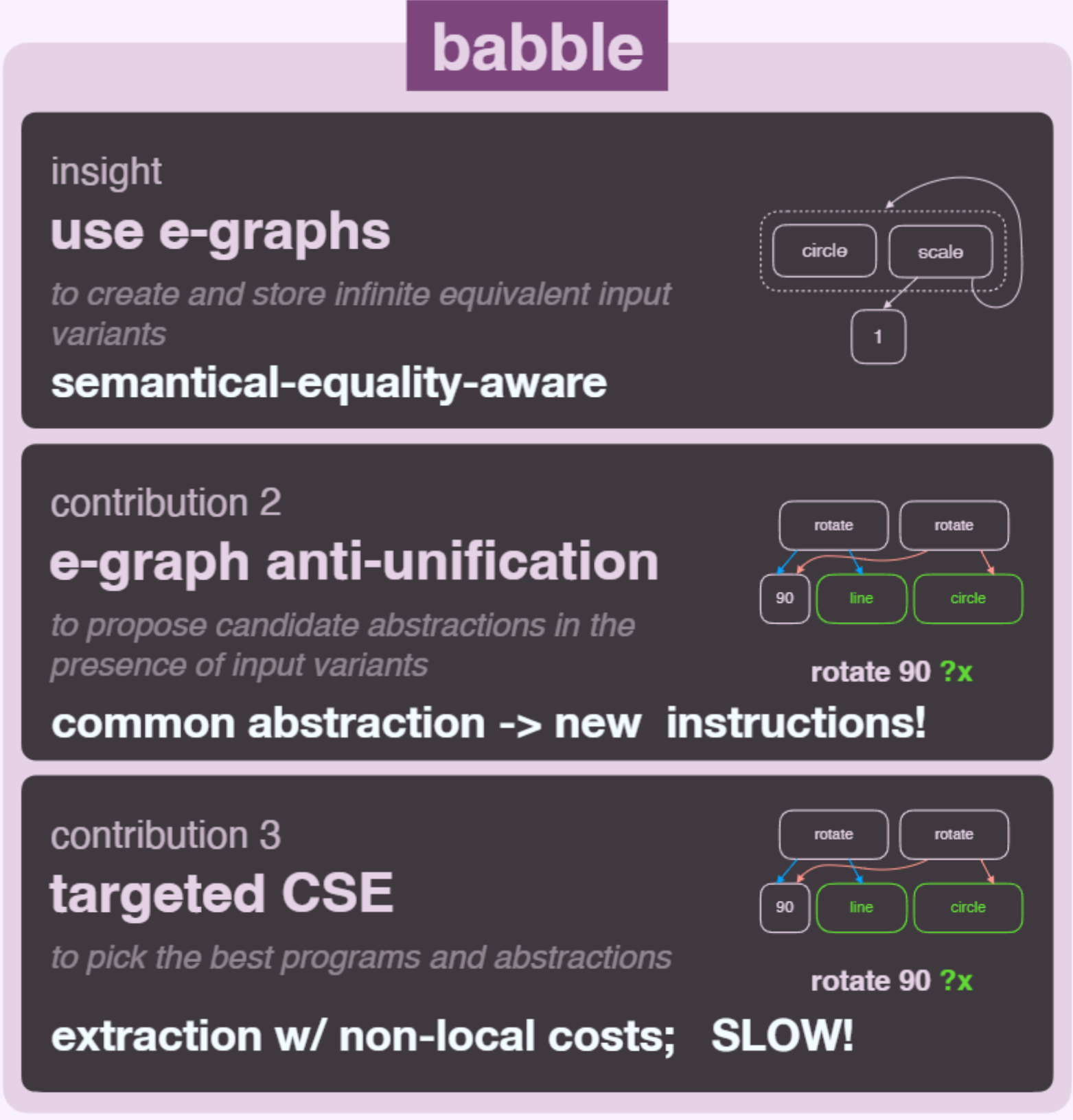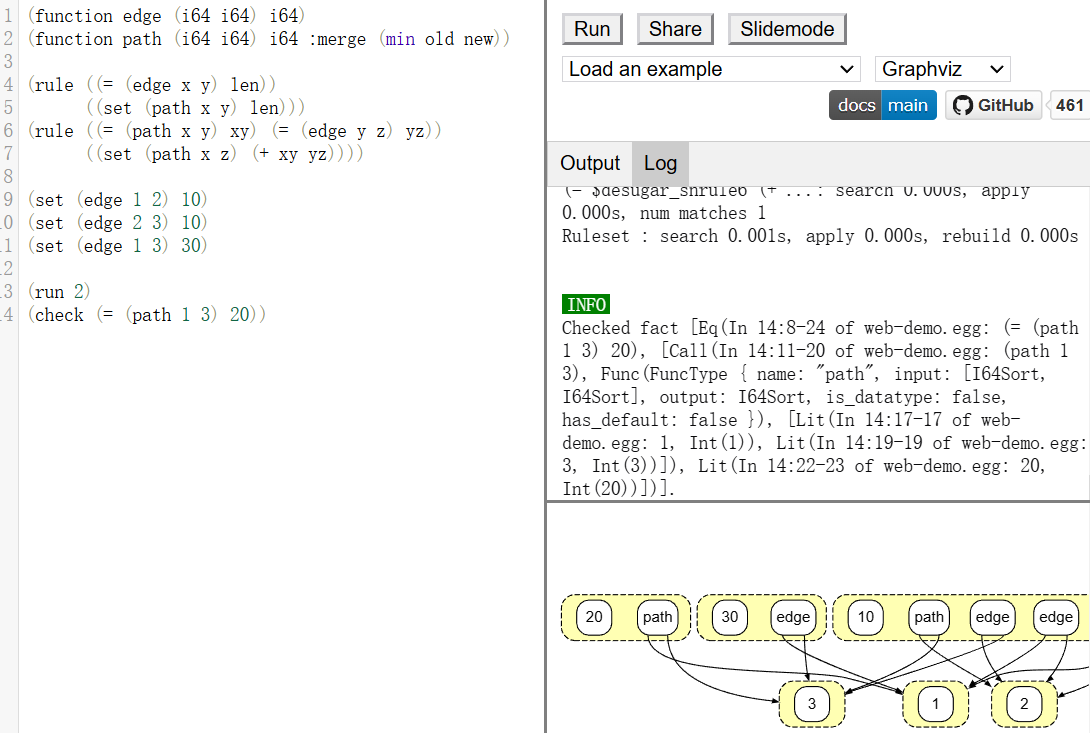More about TRS
- Termination: no infinite sequences of rewrites
- reduction ordering? s.t.
- Confluence: the order of rewrites doesn’t matter
- Completion: transform equations into confluent TRS
- Stategies: controls the applications of term rewriting
Optimizations as Rewrite Strategies
type Strategy[P] = P => RewriteResult[P]
RewriteResult[P] = Success[P](P)
| Failure[P](Strategy[P])
type Traversal[P] = Strategy[P] => Strategy[P]
def ‘@‘[P](s: Strategy[P], t: Traversal[P]) = t(s)
def outermost: Strategy[Rise] => Traversal[Rise] =
pred => s => topDown(pred ‘;‘ s)
// tiling 32x32, nest level 2 in ELEVATE
(tile(32,32) ‘@‘ outermost(mapNest(2)))(mm)
E-graph
E-graph?
- first used in verification
- equality with uninterpreted functions
- if
QF-EUF: quantifier-free equality with uninterpreted functions
What is an e-graph?
An e-graph is a tuple
- Hashcons
- A union-find data structure
- E-class map
Operations in e-graph
- Mutation
add: takes an e-node, (insert an e-class if not exist)merge: unions two e-class ids;
- Query
find: canonicalizes e-class id with union-find;ematch: performs e-matching for finding patterns in the e-graph.
More about e-matching
- input: a pattern term
- output: a list of tuples
- example: e-matching
for e-class c in e-graph E:
for f-node n1 in c:
subst = {root ↦ c, α ↦ n1.child1}
for g-node n2 in n1.child2:
if subst[α] = n2.child1:
yield subst
Rewriting over e-graph
- rewrite:
ematch- for each
merge(add(
(Div (Mul a two) two)
(Div (Shl a (Num 1)) two)
; (Div (Mul a two) two) still exists
Equality Saturation: why? and how?
- Term rewriting is destructive -- forgets LHS
- Phase ordering problem: when to apply which?
- EqSat: apply all rewrites, keeping track of every discovered expression, in e-graph.
def equality_saturation(expr, rewrites):
egraph = initial_egraph(expr)
while not egraph.is_saturated_or_timeout():
for rw in rewrites:
for (subst, eclass) in egraph.ematch(rw.lhs):
eclass2 = egraph.add(rw.rhs.subst(subst))
egraph.merge(eclass, eclass2)
return egraph.extract_best()
EqSat + extraction
(rewrite (Mul a two)
(Shl a (Num 1)))
(rewrite (Div (Mul %x %y) %z)
(Mul %x (Div %y %z)))
(rewrite (Div %x %x) one)
(rewrite (Mul %x one) %x)
(extract (Div (Mul a two) two))
; outputs:
; (Var "a")
So what's egg?
first general-purpose, reusable implementation of e-graphs and equality saturation
MAKES E-GRAPH GREAT AGAIN
What's new?
- rebuilding for amortized invariant maintenance
- fast EqSat: 20.96× speedup. GPU? ray-tracing-alike?
- e-class analysis: abstract interpretation in e-graph
- a domain
- conditional rewrites:
- a domain
Egg in action: Herbie
Herbie uses e-graphs for algebraic simplification of mathematical expressions
The egg backend is over 3000× faster than Herbie’s initial simplifier
Find and fix floating-point problems:
sqrt(x+1) - sqrt(x)
-> 1/(sqrt(x+1) + sqrt(x))
accuracy: 53.1% -> 99.7%
Egg in action: datapath optimization
Abstract domain:
Constraint? Context!
Colored e-graph
More about extraction
The target e-class represents
which one to extract?
pick the smallest (cheapest) one
- Valid extraction:
- if we extract an e-class, we have to extract at least one of its members
- if we extract an e-node, we must also extract all of its children
- Optimal extraction:
- a valid extraction that includes all the target e-classes and has the smallest total cost
ILP extraction
Variables:
Objective:
Constraints:
- Root constraints:
- Class constraints
for each child
- Acyclic constraints
Treewidth extraction for sparse e-graphs
Intuition:
when treewidth is small, every bag is small,
and we can enumerate extraction within each bag;
and thanks to the cut property,
we can conduct dynamic programming over bags.
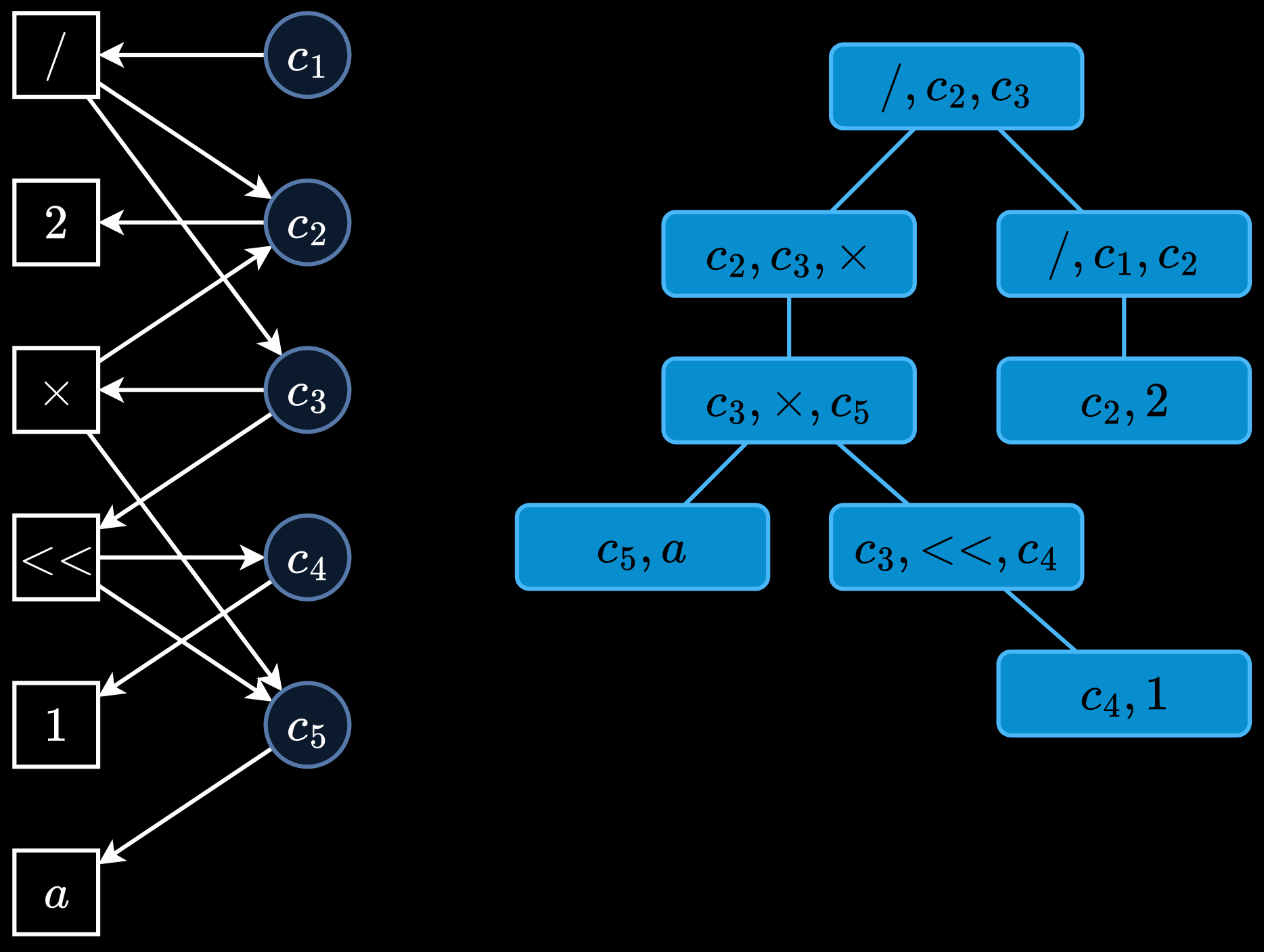
But, decomposition is slow!
Extraction in E-Syn
E-GRAPH REWRITING FOR LOGIC SYNTHESIS
- Regression: XGBoost model to fit the area and delay cost from the AST of a Boolean expression
- cost model is not linear or monotonic
- Pool extraction: heuristics + random sampling + apply XGBoost model
- tradeoff between local heuristics and ILP
- need ~100+ samples
E-graph for compiler
No-egg rewrite-based optimizer
Phase ordering problem is SEVERE! CF is HARD!
